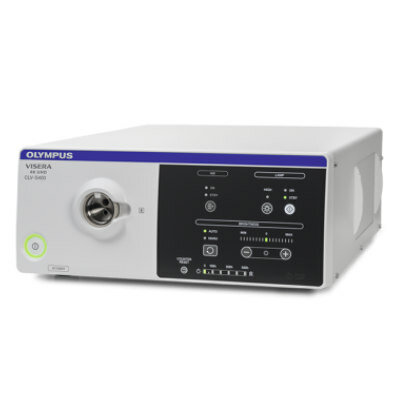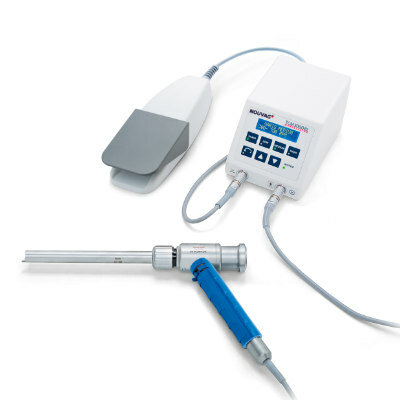Brain Stethoscope Detects Silent Epileptic Seizures
|
By HospiMedica International staff writers Posted on 02 Apr 2018 |

Image: Professor Josef Parvizi listening to a sonified EEG (Photo courtesy of Stanford University).
A new study confirms that sonification of electroencephalograms (EEGs) can aid rapid assessment of patients with suspected subclinical seizures, even by laymen.
Researchers at Stanford University School of Medicine (CA, USA) have developed a novel method to interpret EEG data by converting the wave signal into sound in real time. The technique involves modulation of the underlying electrophysiological signal into a voice tone that is in the audible range. To test the new method, the researchers conducted a study involving 34 medical students and 30 nurses, all without any prior EEG training, who listened to a 15-second sonified EEG and then attempted to determine if it represents seizure or nonseizure conditions.
The researchers selected 84 EEG samples, of which seven represent seizures, 25 represented seizure-like activity, and 52 represented normal nonperiodic, nonrhythmic activity. Single channels EEGs from the left and right hemispheres were then converted to sound files. After a four-minute training video, study participants were asked to designate each audio sample as seizure or nonseizure. Their performance was then compared to that of 12 EEG-trained neurologists and 29 medical students who diagnosed the same EEGs on a visual display.
The results revealed that the non-experts listening to single-channel sonified EEGs detected seizures with a higher sensitivity (students, 98%; nurses, 95%) than experts or nonexperts reviewing the same EEGs on the visual display (neurologists, 88%; students, 76%). In addition, if the EEGs contained seizures or seizure-like activity, the nonexperts listening to the sonified EEGs rated them as such with high specificity (students, 85%; nurses, 82%), close to that of experts or nonexperts viewing the EEGs visually (neurologists, 90%; students, 65%). The study was published on March 20, 2018, in Epilepsia.
“You might think that all seizures must cause some sort of convulsions, namely a patient who's having a seizure must fall down and shake on the ground. But that's actually not the case, especially in critically ill patients in the intensive care units; close to 90% of those patients will have silent seizures,” said lead author Professor Josef Parvizi, MD, PhD, of the department of neurology. “This technology will enable nurses, medical students, and physicians themselves to actually assess their patient right there, and they will be able to determine if the patient is having silent seizures.”
The traditional approach to interpreting EEGs requires physicians with formal training to visually assess the waveforms. This approach can be less practical in critical settings where a trained EEG specialist is not readily available to review the EEG and diagnose ongoing subclinical seizures, such as nonconvulsive status epilepticus. By converting brain waves into sound, even non-specialists can detect silent seizures -- epileptic seizures without the convulsions commonly expected.
Related Links:
Stanford University School of Medicine
Researchers at Stanford University School of Medicine (CA, USA) have developed a novel method to interpret EEG data by converting the wave signal into sound in real time. The technique involves modulation of the underlying electrophysiological signal into a voice tone that is in the audible range. To test the new method, the researchers conducted a study involving 34 medical students and 30 nurses, all without any prior EEG training, who listened to a 15-second sonified EEG and then attempted to determine if it represents seizure or nonseizure conditions.
The researchers selected 84 EEG samples, of which seven represent seizures, 25 represented seizure-like activity, and 52 represented normal nonperiodic, nonrhythmic activity. Single channels EEGs from the left and right hemispheres were then converted to sound files. After a four-minute training video, study participants were asked to designate each audio sample as seizure or nonseizure. Their performance was then compared to that of 12 EEG-trained neurologists and 29 medical students who diagnosed the same EEGs on a visual display.
The results revealed that the non-experts listening to single-channel sonified EEGs detected seizures with a higher sensitivity (students, 98%; nurses, 95%) than experts or nonexperts reviewing the same EEGs on the visual display (neurologists, 88%; students, 76%). In addition, if the EEGs contained seizures or seizure-like activity, the nonexperts listening to the sonified EEGs rated them as such with high specificity (students, 85%; nurses, 82%), close to that of experts or nonexperts viewing the EEGs visually (neurologists, 90%; students, 65%). The study was published on March 20, 2018, in Epilepsia.
“You might think that all seizures must cause some sort of convulsions, namely a patient who's having a seizure must fall down and shake on the ground. But that's actually not the case, especially in critically ill patients in the intensive care units; close to 90% of those patients will have silent seizures,” said lead author Professor Josef Parvizi, MD, PhD, of the department of neurology. “This technology will enable nurses, medical students, and physicians themselves to actually assess their patient right there, and they will be able to determine if the patient is having silent seizures.”
The traditional approach to interpreting EEGs requires physicians with formal training to visually assess the waveforms. This approach can be less practical in critical settings where a trained EEG specialist is not readily available to review the EEG and diagnose ongoing subclinical seizures, such as nonconvulsive status epilepticus. By converting brain waves into sound, even non-specialists can detect silent seizures -- epileptic seizures without the convulsions commonly expected.
Related Links:
Stanford University School of Medicine
Latest Critical Care News
- Deep-Learning Model Predicts Arrhythmia 30 Minutes before Onset
- Breakthrough Technology Combines Detection and Treatment of Nerve-Related Disorders in Single Procedure
- Plasma Irradiation Promotes Faster Bone Healing
- New Device Treats Acute Kidney Injury from Sepsis
- Study Confirms Safety of DCB-Only Strategy for Treating De Novo Left Main Coronary Artery Disease
- Revascularization Improves Quality of Life for Patients with Chronic Limb Threatening Ischemia
- AI-Driven Prediction Models Accurately Predict Critical Care Patient Deterioration
- Preventive PCI for High-Risk Coronary Plaques Reduces Cardiac Events
- AI Diagnostic Tool Guides Rapid Diagnosis and Prediction of Sepsis
- World's First AI-Powered Sepsis Alert System Detects Sepsis in One Minute
- Smartphone Magnetometer Uses Magnetized Hydrogel to Measure Biomarkers for Disease Diagnosis
- New Technology to Revolutionize Valvular Heart Disease Care
- Super Permeable Wearable Electronics Enable Long-Term Biosignal Monitoring
- New Hydrogel Features Enhanced Capabilities for Treating Aneurysms and Halting Progression
- New AI Tool Predicts Medical Events to Support Clinical Decision-Making in Healthcare Settings
- Bioelectronic Mesh Grows With Cardiac Tissues for Comprehensive Heart Monitoring
Channels
Artificial Intelligence
view channel
AI-Powered Algorithm to Revolutionize Detection of Atrial Fibrillation
Atrial fibrillation (AFib), a condition characterized by an irregular and often rapid heart rate, is linked to increased risks of stroke and heart failure. This is because the irregular heartbeat in AFib... Read more
AI Diagnostic Tool Accurately Detects Valvular Disorders Often Missed by Doctors
Doctors generally use stethoscopes to listen for the characteristic lub-dub sounds made by heart valves opening and closing. They also listen for less prominent sounds that indicate problems with these valves.... Read moreSurgical Techniques
view channel
Hydrogel-Based Miniaturized Electric Generators to Power Biomedical Devices
The development of engineered devices that can harvest and convert the mechanical motion of the human body into electricity is essential for powering bioelectronic devices. This mechanoelectrical energy... Read moreWearable Technology Monitors and Analyzes Surgeons' Posture during Long Surgical Procedures
The physical strain associated with the static postures maintained by neurosurgeons during long operations can lead to fatigue and musculoskeletal problems. An objective assessment of surgical ergonomics... Read more.jpg)
Custom 3D-Printed Orthopedic Implants Transform Joint Replacement Surgery
The evolving field of 3D printing is revolutionizing orthopedics, especially for individuals requiring joint replacement surgeries where traditional implants fail to provide a solution. Although most people... Read more
Cutting-Edge Imaging Platform Detects Residual Breast Cancer Missed During Lumpectomy Surgery
Breast cancer is becoming increasingly common, with statistics indicating that 1 in 8 women will develop the disease in their lifetime. Lumpectomy remains the predominant surgical intervention for treating... Read morePatient Care
view channel
Surgical Capacity Optimization Solution Helps Hospitals Boost OR Utilization
An innovative solution has the capability to transform surgical capacity utilization by targeting the root cause of surgical block time inefficiencies. Fujitsu Limited’s (Tokyo, Japan) Surgical Capacity... Read more
Game-Changing Innovation in Surgical Instrument Sterilization Significantly Improves OR Throughput
A groundbreaking innovation enables hospitals to significantly improve instrument processing time and throughput in operating rooms (ORs) and sterile processing departments. Turbett Surgical, Inc.... Read more
Next Gen ICU Bed to Help Address Complex Critical Care Needs
As the critical care environment becomes increasingly demanding and complex due to evolving hospital needs, there is a pressing requirement for innovations that can facilitate patient recovery.... Read moreGroundbreaking AI-Powered UV-C Disinfection Technology Redefines Infection Control Landscape
Healthcare-associated infection (HCAI) is a widespread complication in healthcare management, posing a significant health risk due to its potential to increase patient morbidity and mortality, prolong... Read moreHealth IT
view channel
Machine Learning Model Improves Mortality Risk Prediction for Cardiac Surgery Patients
Machine learning algorithms have been deployed to create predictive models in various medical fields, with some demonstrating improved outcomes compared to their standard-of-care counterparts.... Read more
Strategic Collaboration to Develop and Integrate Generative AI into Healthcare
Top industry experts have underscored the immediate requirement for healthcare systems and hospitals to respond to severe cost and margin pressures. Close to half of U.S. hospitals ended 2022 in the red... Read more
AI-Enabled Operating Rooms Solution Helps Hospitals Maximize Utilization and Unlock Capacity
For healthcare organizations, optimizing operating room (OR) utilization during prime time hours is a complex challenge. Surgeons and clinics face difficulties in finding available slots for booking cases,... Read more
AI Predicts Pancreatic Cancer Three Years before Diagnosis from Patients’ Medical Records
Screening for common cancers like breast, cervix, and prostate cancer relies on relatively simple and highly effective techniques, such as mammograms, Pap smears, and blood tests. These methods have revolutionized... Read morePoint of Care
view channel
Critical Bleeding Management System to Help Hospitals Further Standardize Viscoelastic Testing
Surgical procedures are often accompanied by significant blood loss and the subsequent high likelihood of the need for allogeneic blood transfusions. These transfusions, while critical, are linked to various... Read more
Point of Care HIV Test Enables Early Infection Diagnosis for Infants
Early diagnosis and initiation of treatment are crucial for the survival of infants infected with HIV (human immunodeficiency virus). Without treatment, approximately 50% of infants who acquire HIV during... Read more
Whole Blood Rapid Test Aids Assessment of Concussion at Patient's Bedside
In the United States annually, approximately five million individuals seek emergency department care for traumatic brain injuries (TBIs), yet over half of those suspecting a concussion may never get it checked.... Read more
New Generation Glucose Hospital Meter System Ensures Accurate, Interference-Free and Safe Use
A new generation glucose hospital meter system now comes with several features that make hospital glucose testing easier and more secure while continuing to offer accuracy, freedom from interference, and... Read moreBusiness
view channel
Johnson & Johnson Acquires Cardiovascular Medical Device Company Shockwave Medical
Johnson & Johnson (New Brunswick, N.J., USA) and Shockwave Medical (Santa Clara, CA, USA) have entered into a definitive agreement under which Johnson & Johnson will acquire all of Shockwave’s... Read more














